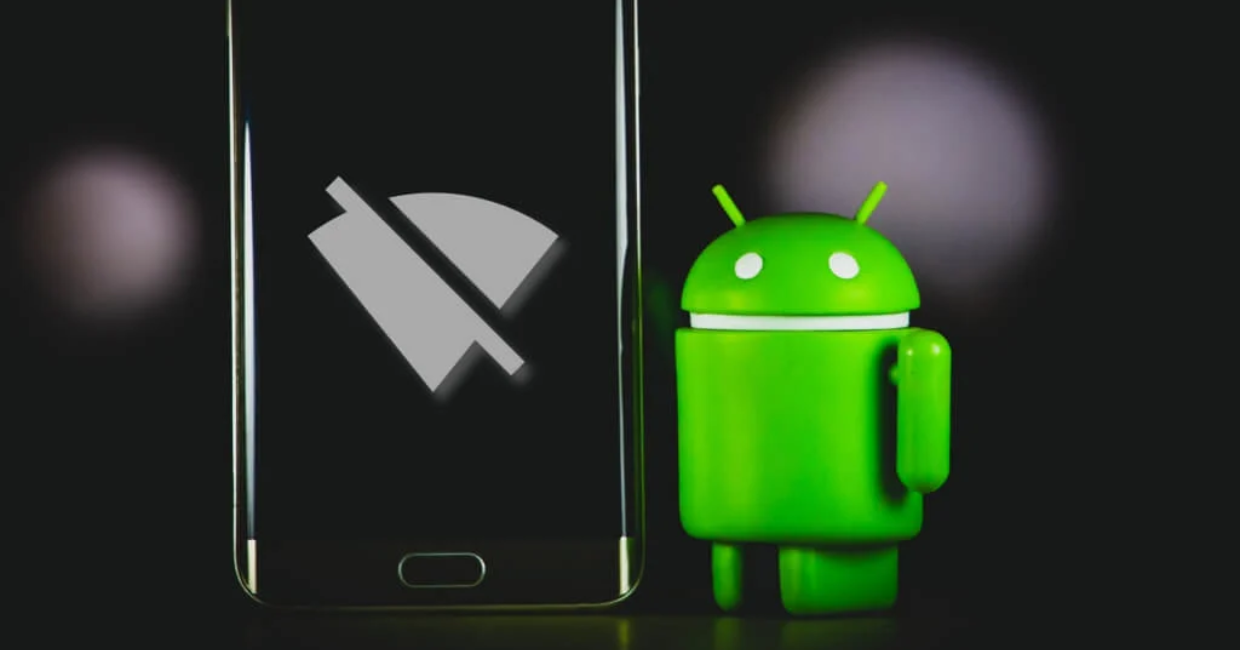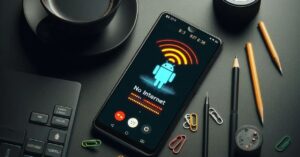Wi-Fi Not Connecting on Your Android Phone? Try These Proven Fixes

Wi-Fi Not Connecting
We live in a world where being online is no longer optional—it’s essential. But when you pick up your Android phone and see Wi-Fi not connecting, it can be incredibly frustrating. Whether you’re trying to watch a video, join a Zoom call, or check your emails, a broken Wi-Fi connection can disrupt everything.
Fortunately, this issue is more common than you might think—and most of the time, it’s fixable. In this complete guide, we’ll walk you through all the steps you need to take to solve the Wi-Fi not connecting issue on your Android device.
Android Phone Freezing? Here’s How to Fix It Easily
What Causes the “Wi-Fi Not Connecting” Problem?
Before you fix the problem, it helps to understand why it’s happening in the first place. Here are some of the most common reasons behind Wi-Fi not connecting issues on Android phones:
- Weak or unstable Wi-Fi signal
- Incorrect Wi-Fi password
- Software glitches
- Router malfunctions
- IP conflicts or DHCP issues
- Interference from apps or settings
- Hardware problems like a damaged antenna
Now, let’s go step-by-step through different solutions to solve the Wi-Fi not connecting problem on your Android phone.
1. Restart Your Phone and Router
The simplest and often most effective solution is to restart both your Android phone and your Wi-Fi router.
How to Do It:
- Turn off your Android device and power it back on after 30 seconds.
- Unplug your Wi-Fi router for 10 seconds, then plug it back in.
This clears temporary bugs and gives your network and phone a fresh start, which often solves Wi-Fi not connecting problems.
2. Toggle Wi-Fi and Airplane Mode
Sometimes the network settings need a quick reset.
Steps:
- Swipe down to open the Quick Settings panel.
- Turn off Wi-Fi and wait a few seconds before turning it back on.
- Enable Airplane Mode for 15–20 seconds, then disable it.
These simple toggles can help re-establish a broken connection and fix minor glitches responsible for Wi-Fi not connecting.
3. Verify the Wi-Fi Network
Ensure the issue isn’t with the network itself.
- Check if other devices can connect to the same Wi-Fi.
- If no device is connecting, the issue likely lies with the router or your internet service provider.
- If your Android phone is the only device showing Wi-Fi not connecting, move on to the next fixes.
4. Forget and Reconnect to the Network
Incorrect or outdated connection data can lead to Wi-Fi not connecting issues.
How to Forget and Reconnect:
- Go to Settings > Network & Internet > Wi-Fi.
- Tap the name of the connected Wi-Fi.
- Select Forget Network.
- Re-enter the Wi-Fi password and reconnect.
This refresh often clears up issues caused by stored data or failed connection attempts.
5. Check Wi-Fi Password and Settings
Double-check that you’re entering the correct Wi-Fi password. A simple typo can cause repeated Wi-Fi not connecting messages.
- Make sure CAPS LOCK isn’t on.
- Verify the password with someone who knows the network details.
- Try connecting to a different Wi-Fi network to see if the issue is specific to one network.
6. Update Your Android Software
Outdated software can interfere with your phone’s ability to connect to networks.
To Update:
- Open Settings > System > Software Update.
- If an update is available, download and install it.
Installing updates can often fix bugs that cause Wi-Fi not connecting errors.
7. Reset Network Settings
If you’re still seeing Wi-Fi not connecting, it may be time to reset your network settings.
Warning:
This will delete all saved Wi-Fi networks and paired Bluetooth devices.
Steps:
- Go to Settings > System > Reset options.
- Select Reset Wi-Fi, mobile & Bluetooth.
- Confirm your choice.
After the reset, reconnect to your Wi-Fi network and see if the problem persists.
8. Check for App Conflicts in Safe Mode
Some third-party apps can block Wi-Fi access or interfere with network functions.
How to Use Safe Mode:
- Press and hold the Power button.
- Tap and hold Power Off.
- When prompted, confirm to boot into Safe Mode.
Try connecting to Wi-Fi in Safe Mode. If it works, one of your installed apps might be causing the Wi-Fi not connecting issue. Start uninstalling recently installed apps to isolate the culprit.
9. Disable Battery Saver and Data Saver
Battery and data-saving features may block background network activity or limit Wi-Fi functionality.
How to Check:
- Go to Settings > Battery > Battery Saver.
- Turn it off.
- Also go to Settings > Network & Internet > Data Saver and turn it off if enabled.
Disabling these settings can restore normal connectivity and fix your Wi-Fi not connecting error.
10. Adjust IP and DHCP Settings
Sometimes, the phone may struggle to obtain a valid IP address from the router.
Fix It Manually:
- Go to Wi-Fi Settings.
- Tap on your network and select Advanced Options or Modify network.
- Change IP settings from DHCP to Static.
- Enter:
- IP address (e.g., 192.168.1.201)
- Gateway (e.g., 192.168.1.1)
- DNS 1 and DNS 2 (e.g., 8.8.8.8 and 8.8.4.4)
Manual IP assignment can solve IP conflicts that cause Wi-Fi not connecting problems.
11. Check Router MAC Filtering
MAC filtering is a security feature that may block your device.
Steps:
- Log into your router settings (usually through a web browser like 192.168.1.1).
- Look for MAC Filtering or Access Control.
- Either disable it or add your phone’s MAC address to the allowed list.
To Find MAC Address:
- Go to Settings > About Phone > Status > Wi-Fi MAC Address.
If your MAC address is being blocked, your Android will keep showing Wi-Fi not connecting no matter what you try.
12. Disable VPN and Proxy Settings
Some VPN or proxy tools can interfere with Wi-Fi access.
- Go to Settings > Network & Internet > VPN and disconnect or remove any VPN profiles.
- Check for proxy settings under your Wi-Fi advanced options, and set it to None if active.
Turning off VPNs can quickly resolve a Wi-Fi not connecting issue caused by security conflicts.
13. Update Router Firmware
Your router, like your phone, runs software that needs updates from time to time.
- Log into your router’s admin panel.
- Look for a Firmware Update or System Update option.
- Follow the manufacturer’s instructions.
Updating your router’s firmware can fix known issues that might result in Wi-Fi not connecting errors.
14. Factory Reset (Last Option)
If you’ve tried every solution and your Wi-Fi is still not connecting, a factory reset may be your last resort.
Warning:
A factory reset will erase all your phone’s data. Back everything up first.
How to Reset:
- Go to Settings > System > Reset options > Erase all data (factory reset).
- Confirm and allow the process to complete.
After the reset, check your Wi-Fi connection before installing apps or restoring backups.
15. Visit a Repair Center if Nothing Works
If all else fails, and your phone still shows Wi-Fi not connecting, the issue may be hardware-related.
- A damaged Wi-Fi antenna or internal component could be the cause.
- Visit a certified service center for a full diagnosis.
- Check your warranty before seeking repairs.
Tips to Avoid Wi-Fi Connection Issues in the Future
- Always update your Android phone and router firmware.
- Reboot your phone and router regularly.
- Avoid downloading apps from unknown sources.
- Use a secure Wi-Fi password.
- Limit the number of devices connected to your router.
Conclusion
Seeing a Wi-Fi not connecting message on your Android phone can be stressful, but it’s rarely a dead-end situation. Whether the cause is software-based, app-related, or network-specific, you now have the tools to fix it.
From restarting devices and updating settings to more advanced troubleshooting like IP management and router checks, the solutions above cover everything you need to resolve Wi-Fi not connecting issues once and for all.
If the problem continues even after trying all the recommended steps, don’t hesitate to get professional help—especially if you suspect a hardware malfunction.
With the right knowledge and a little patience, you can get back online and stay connected with ease.




